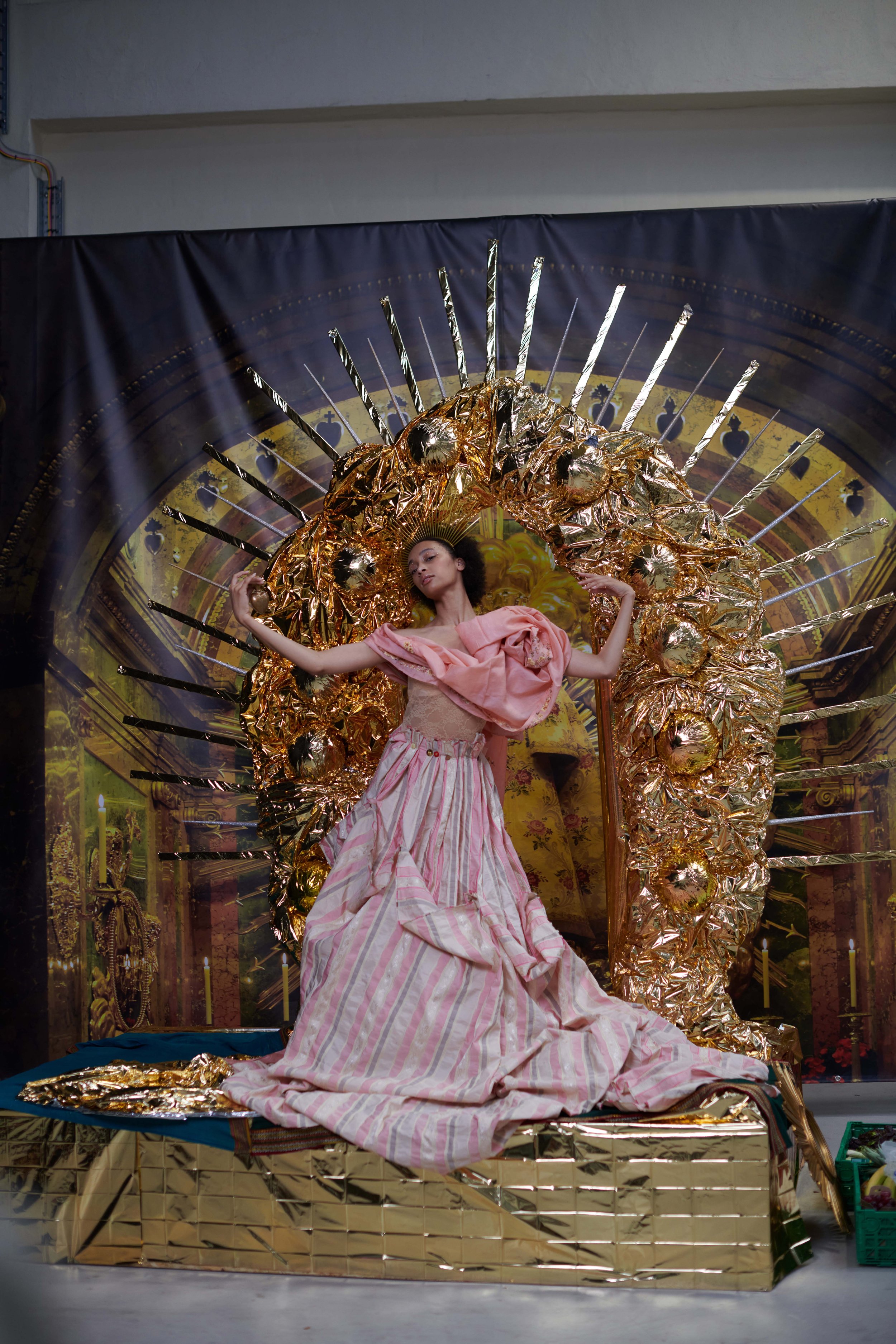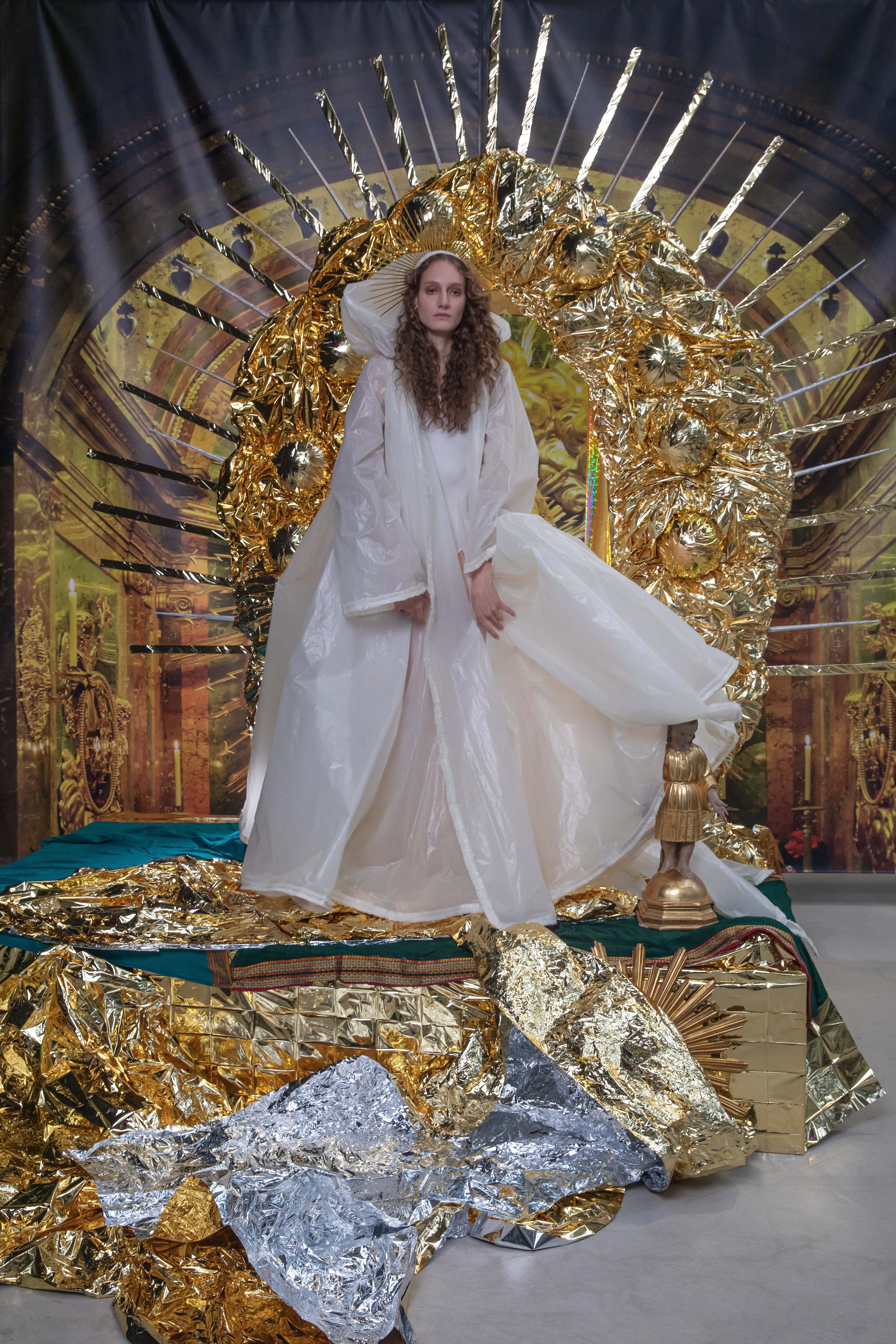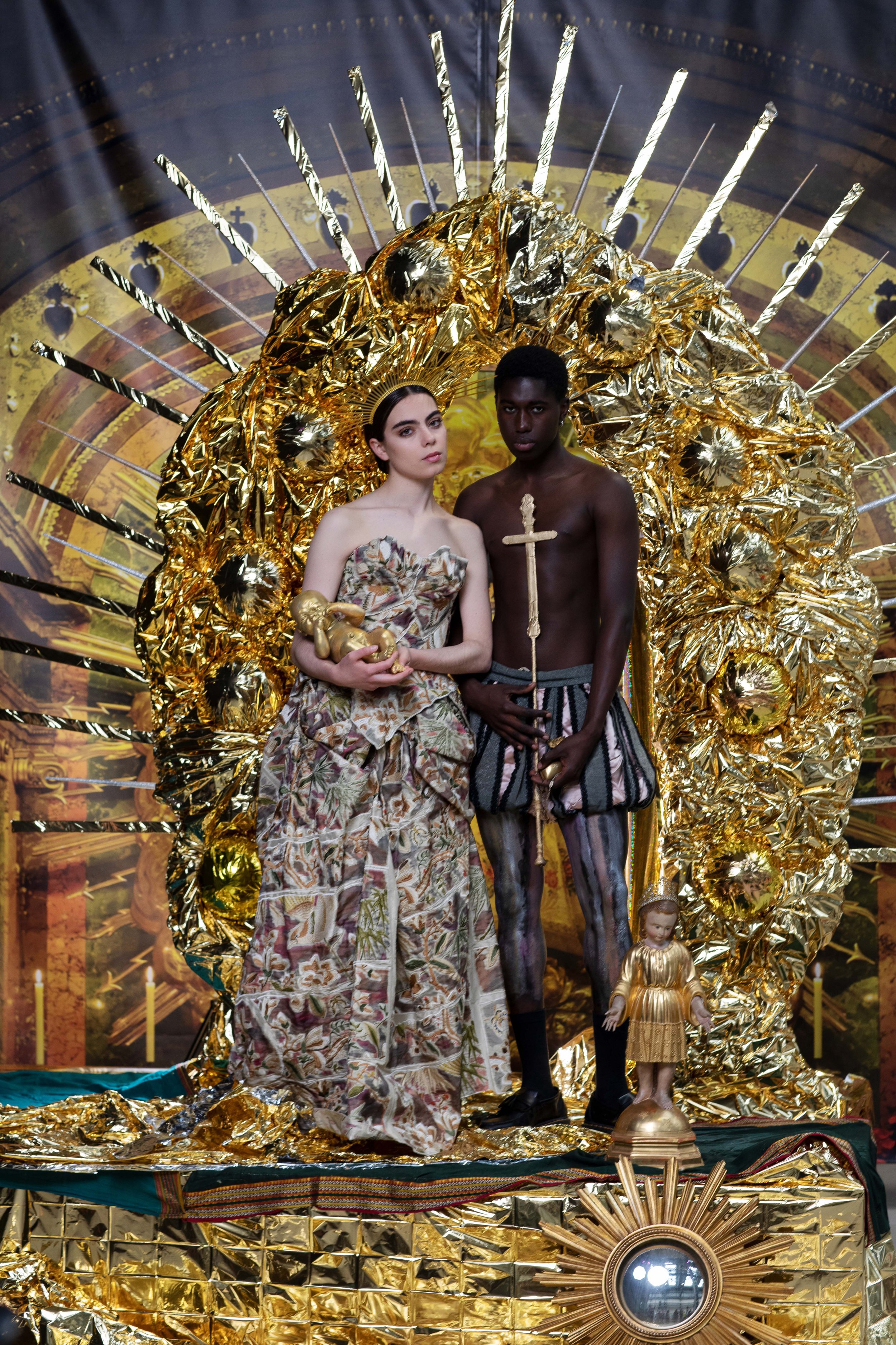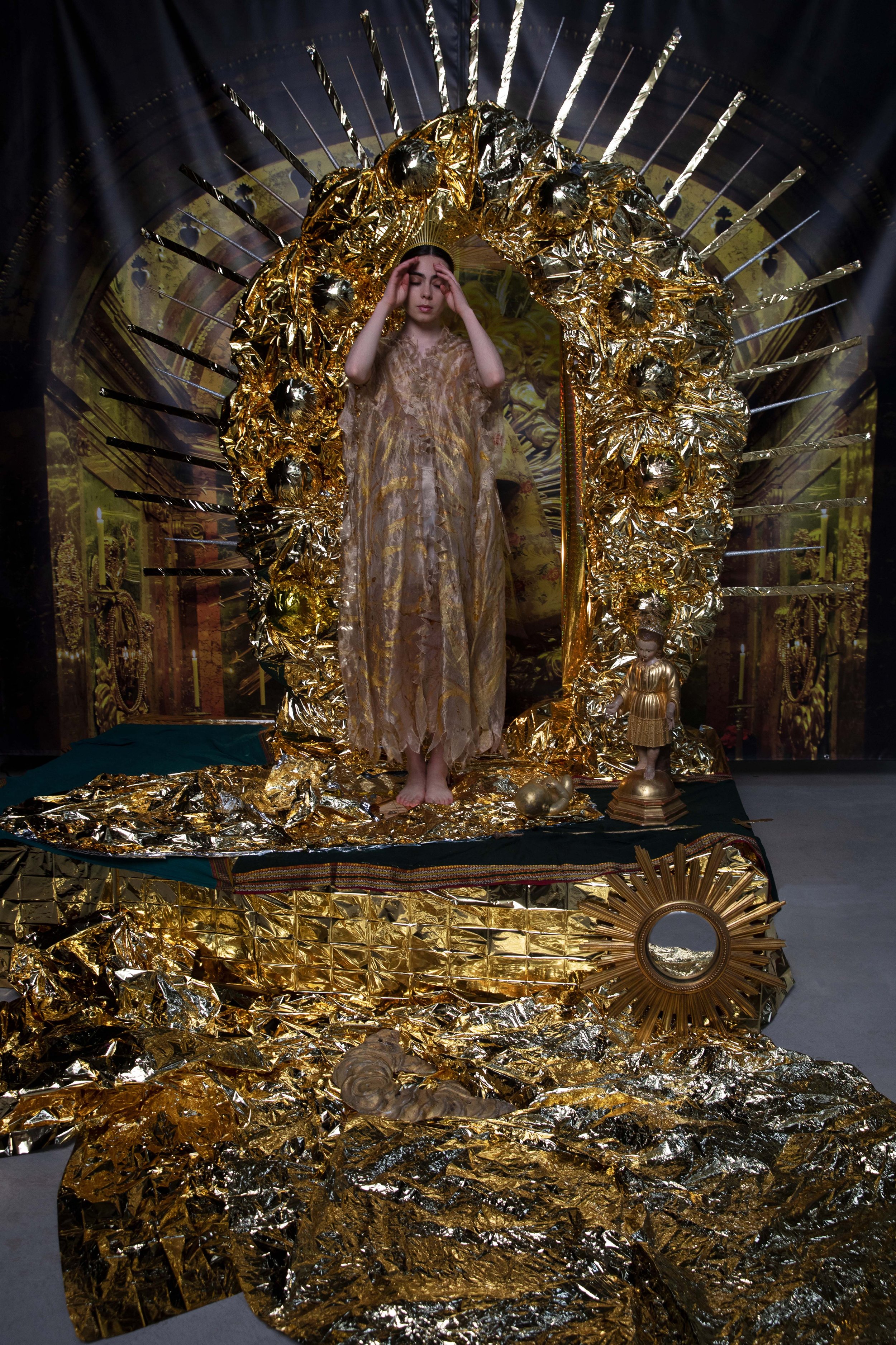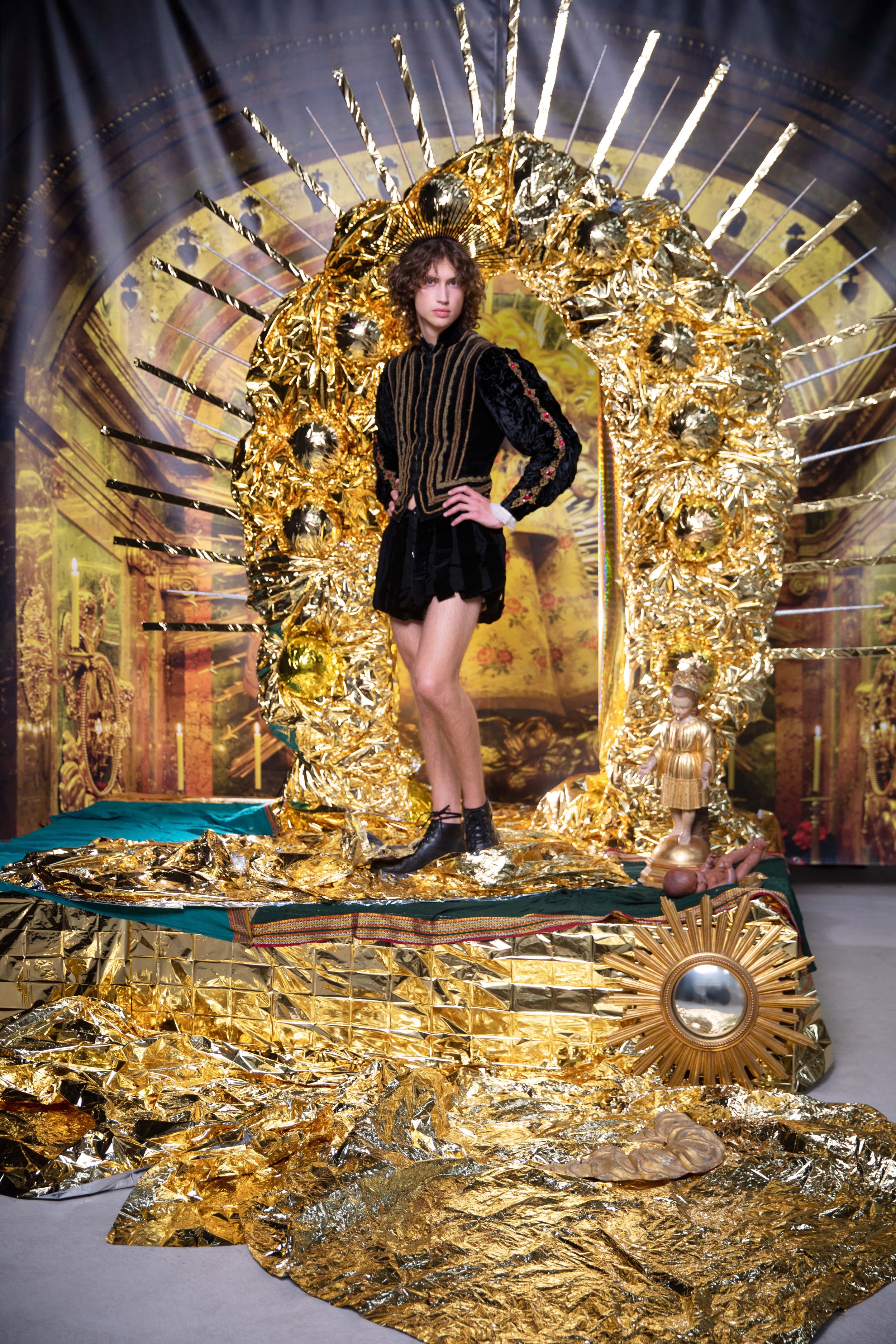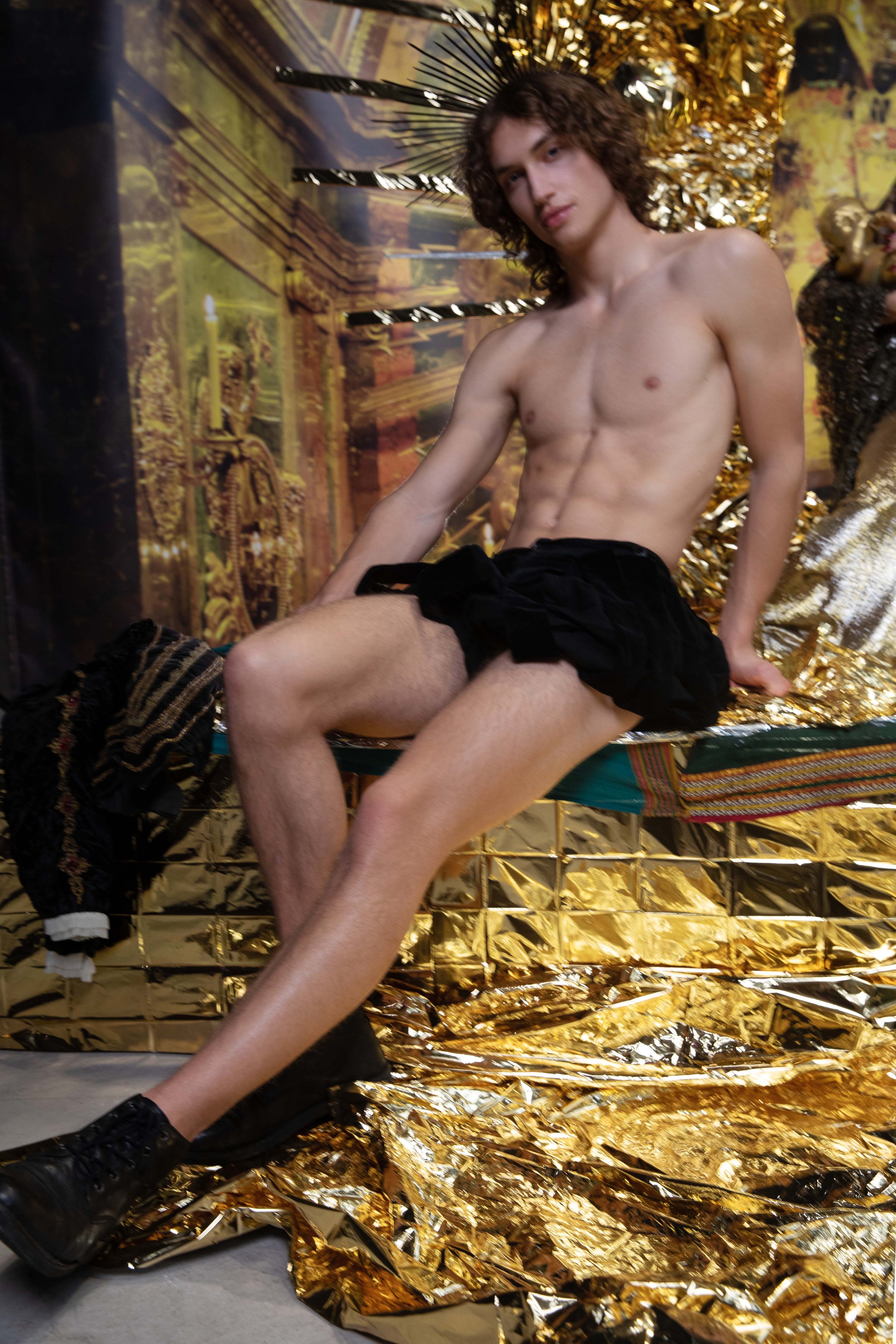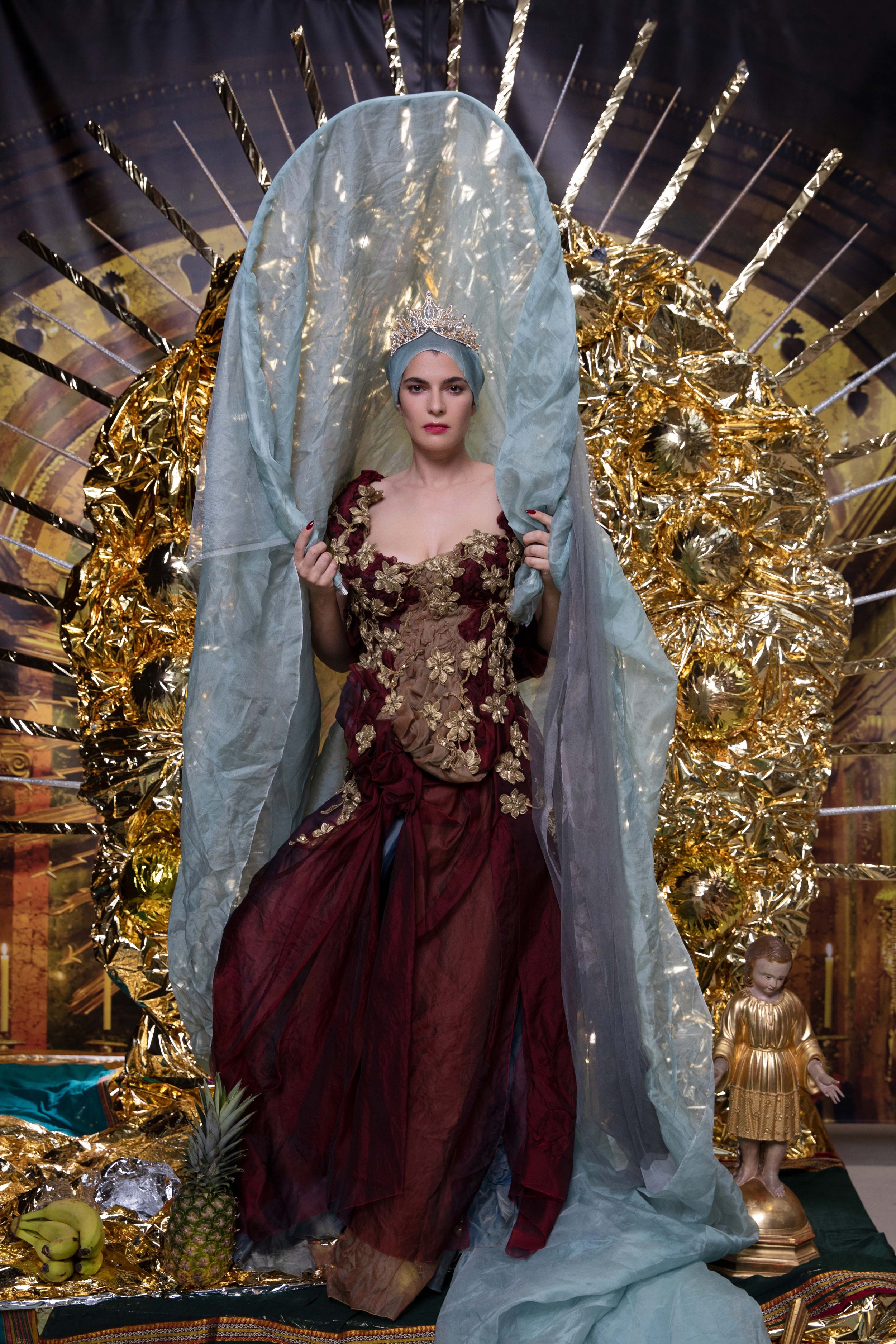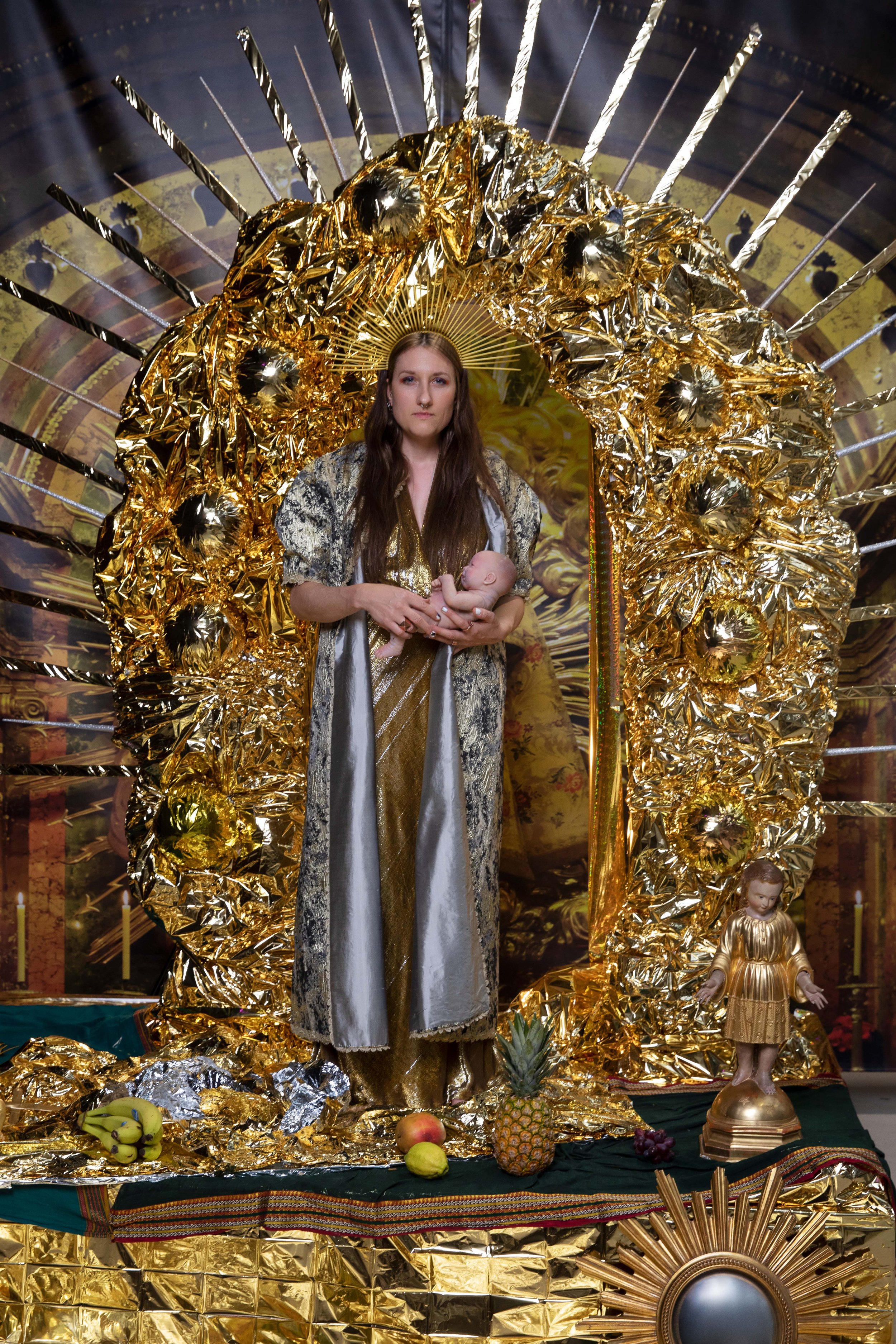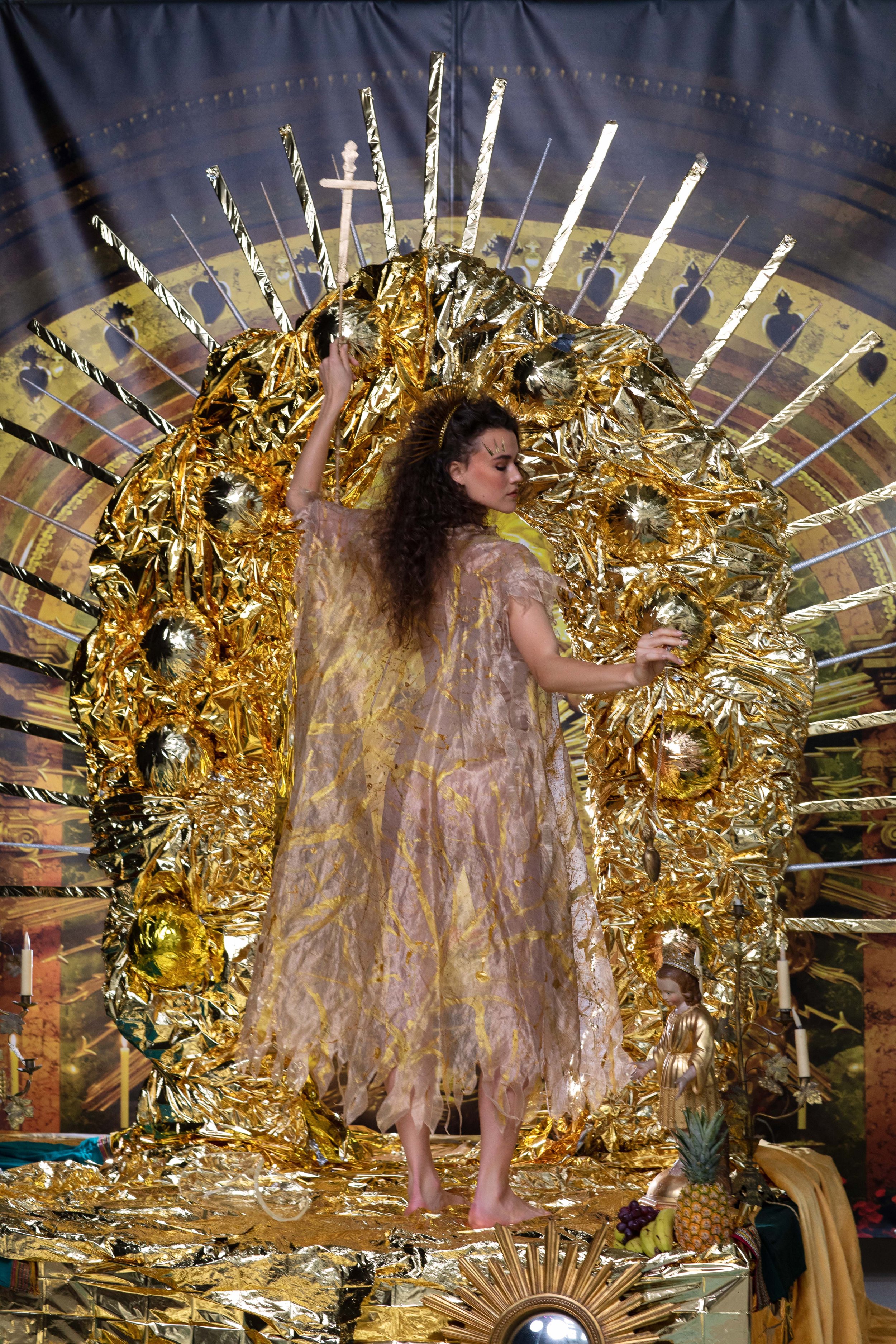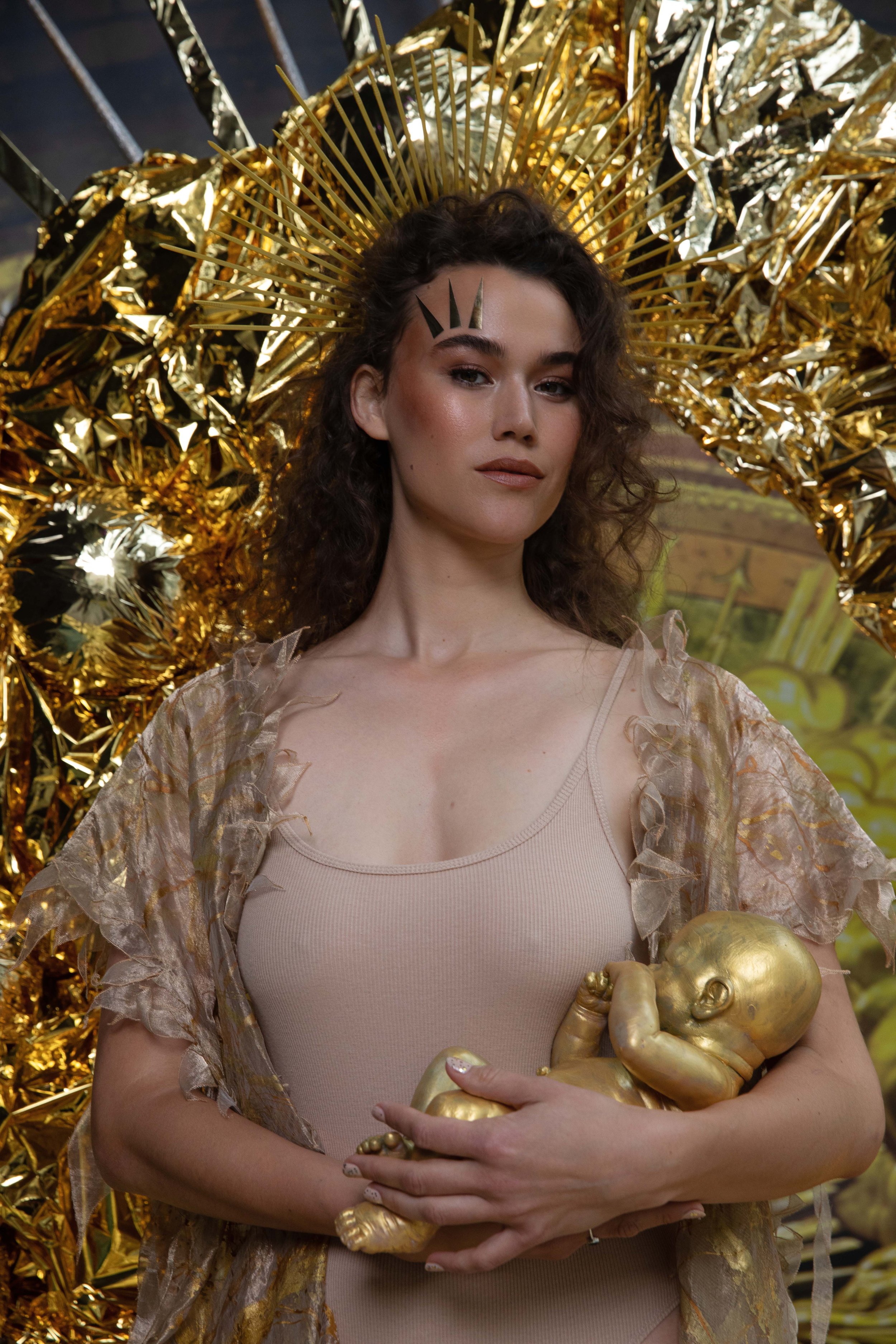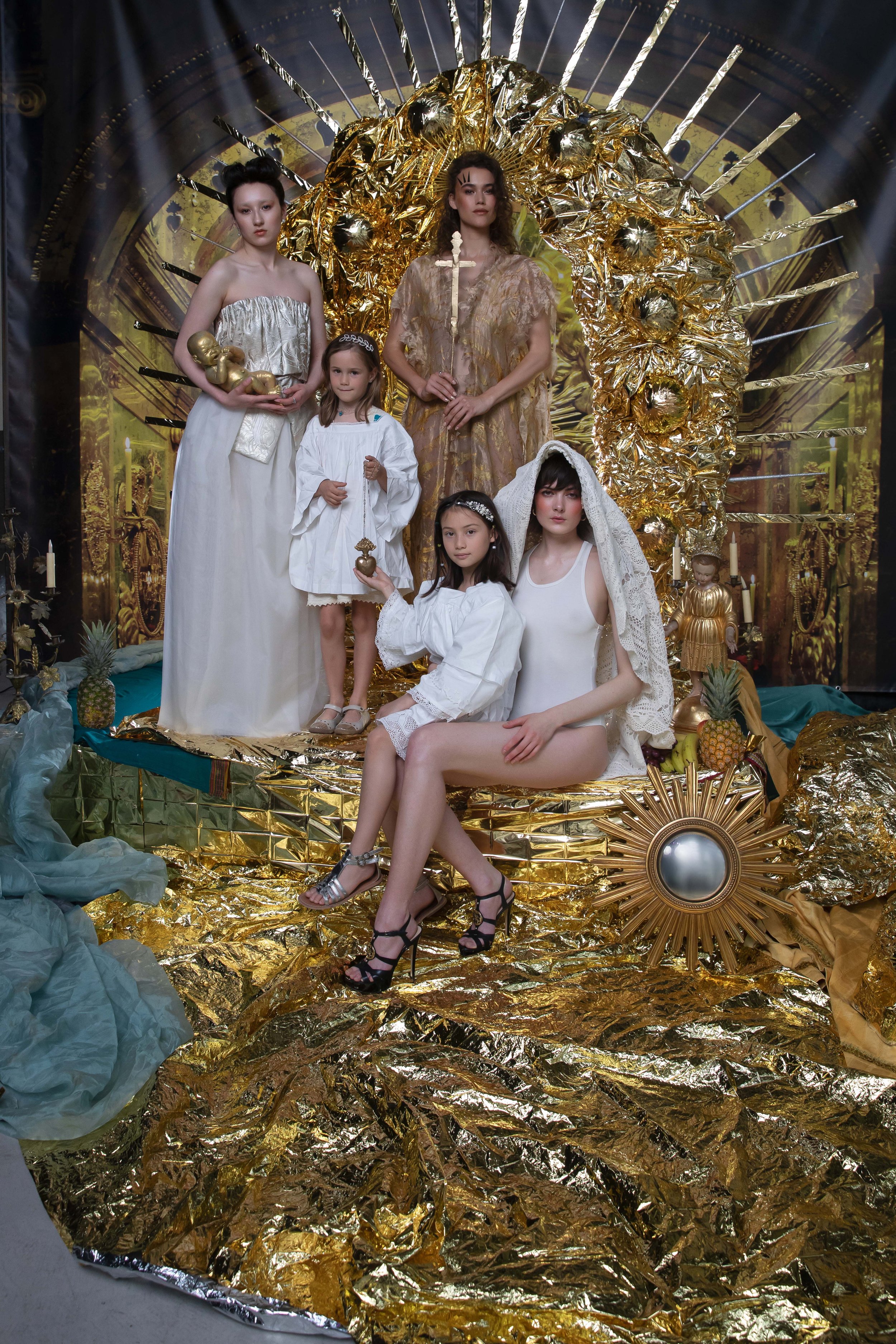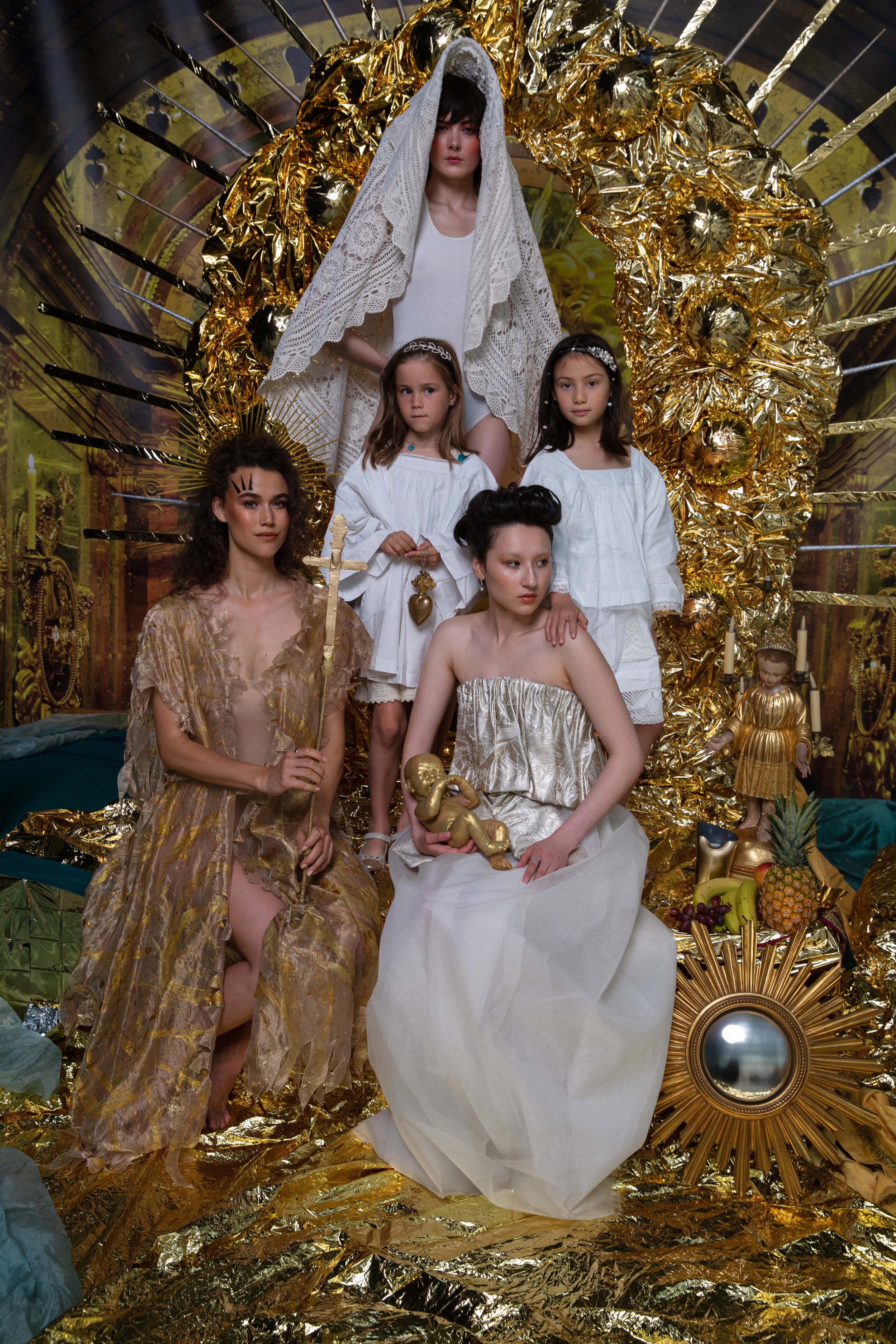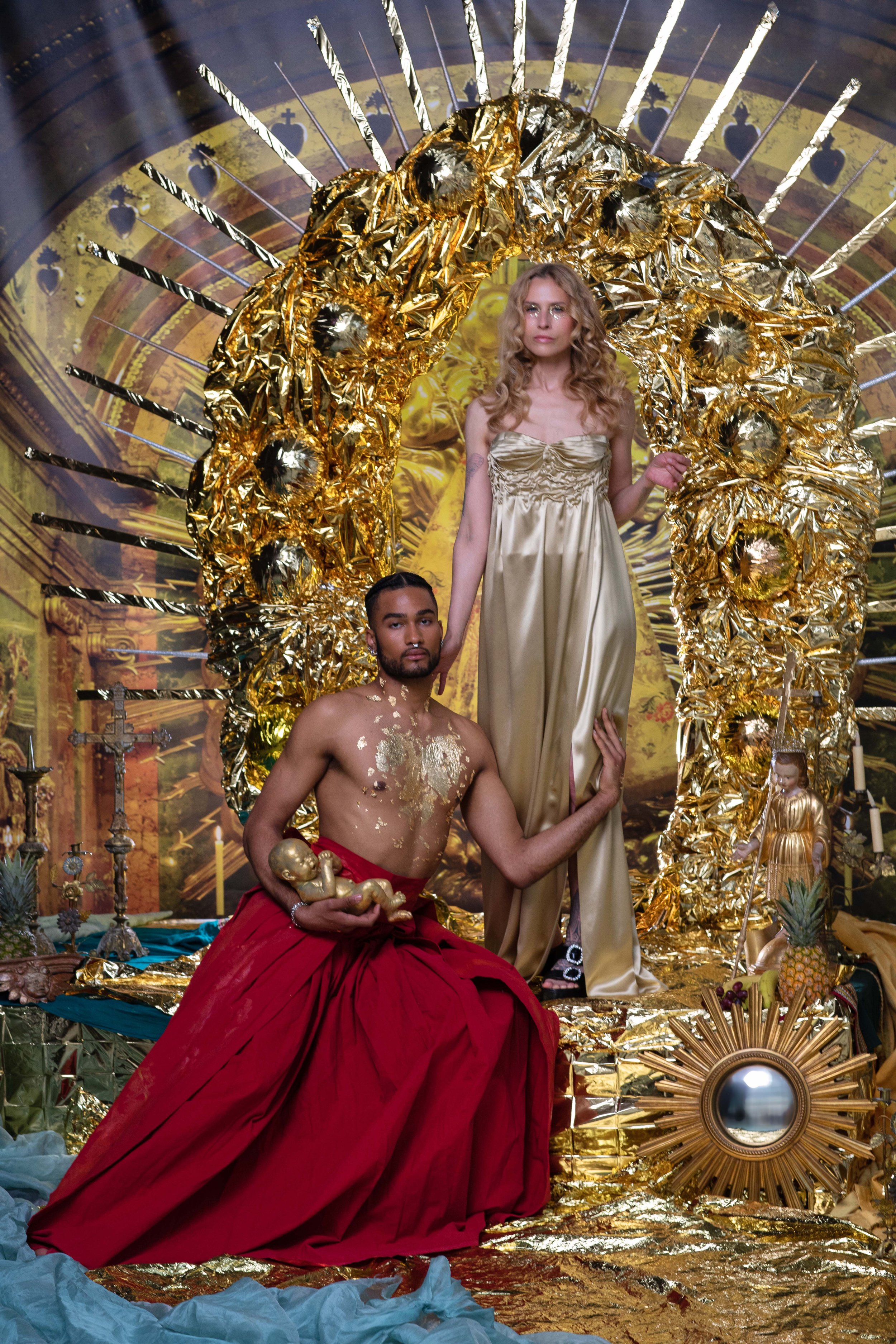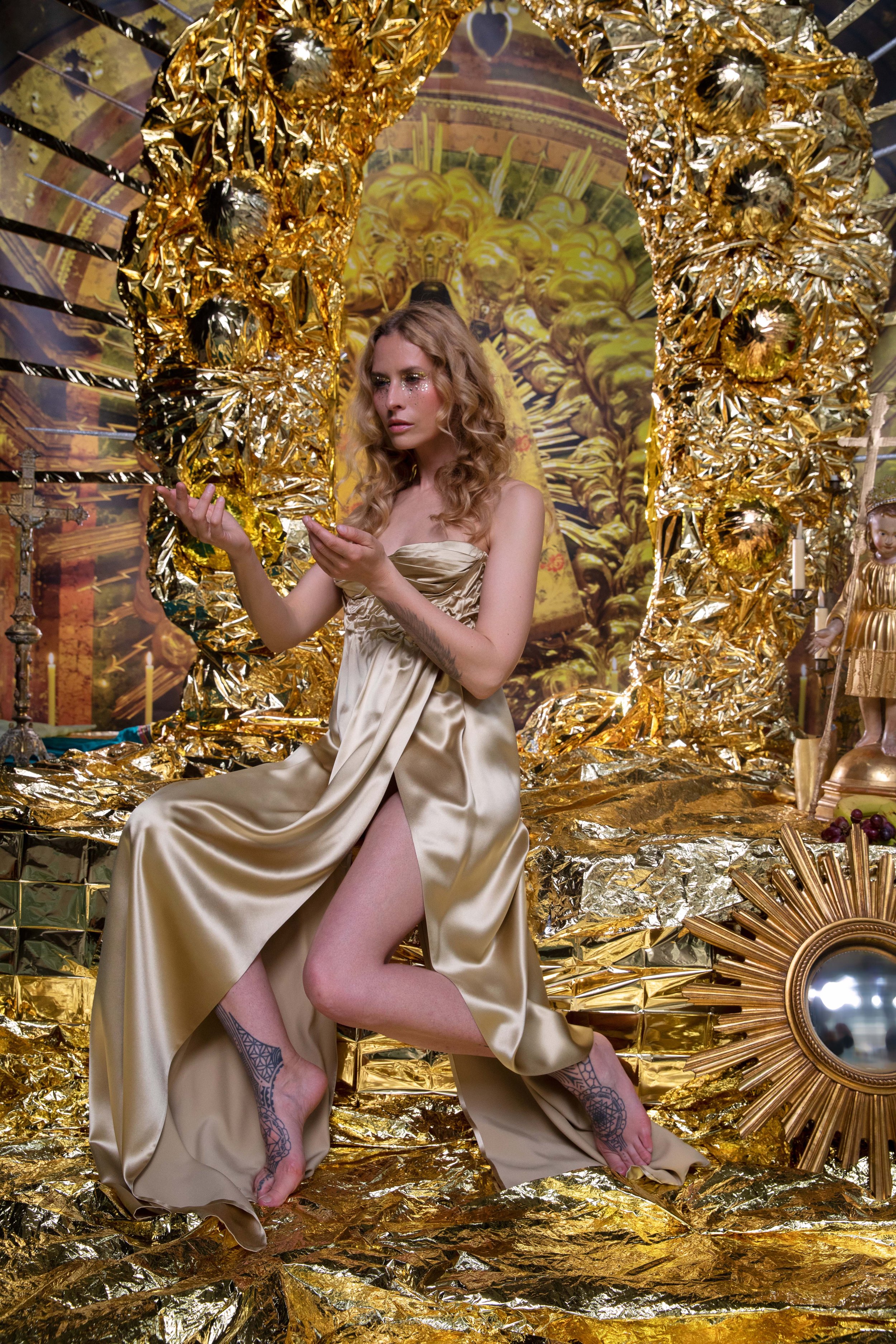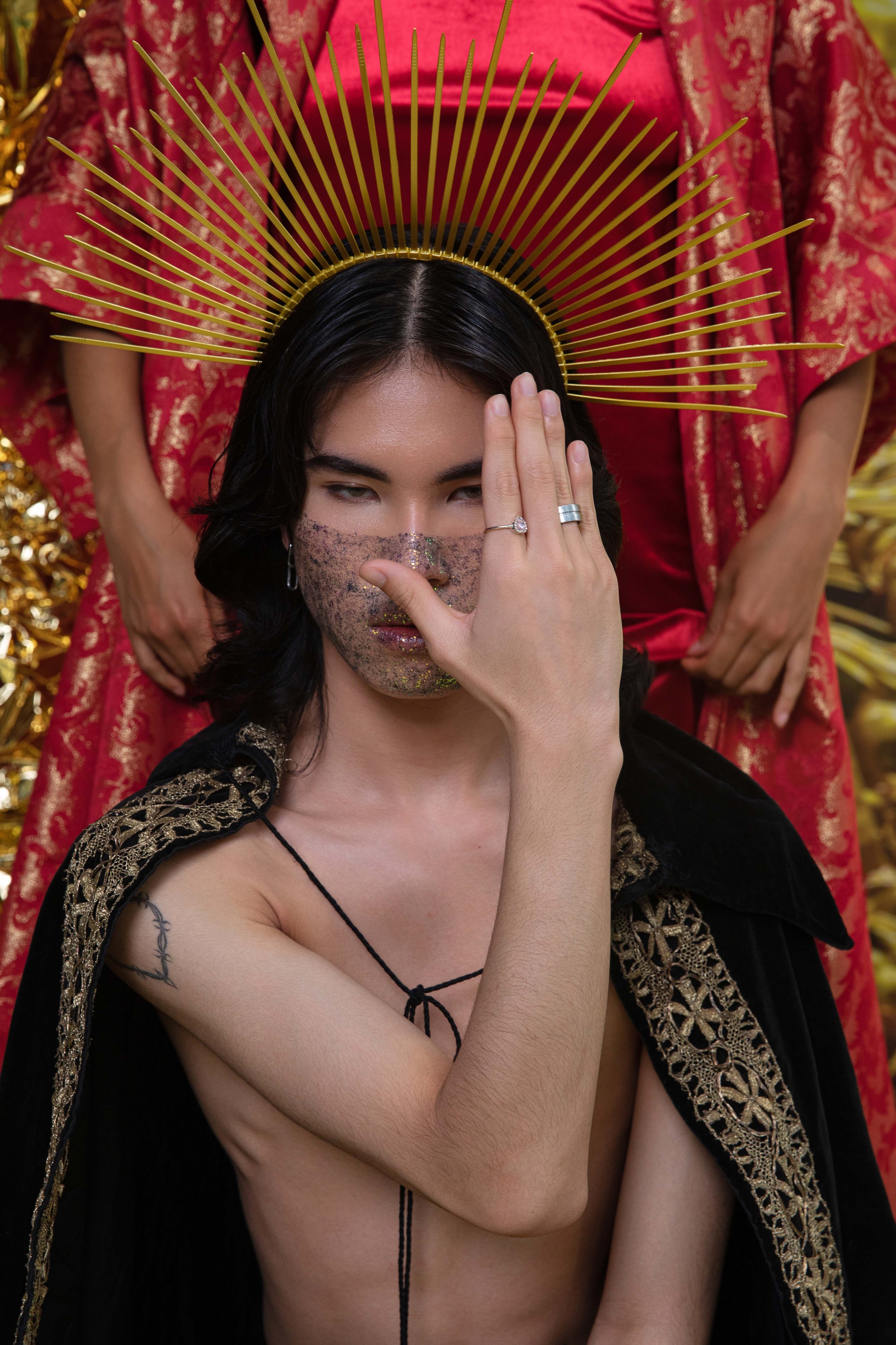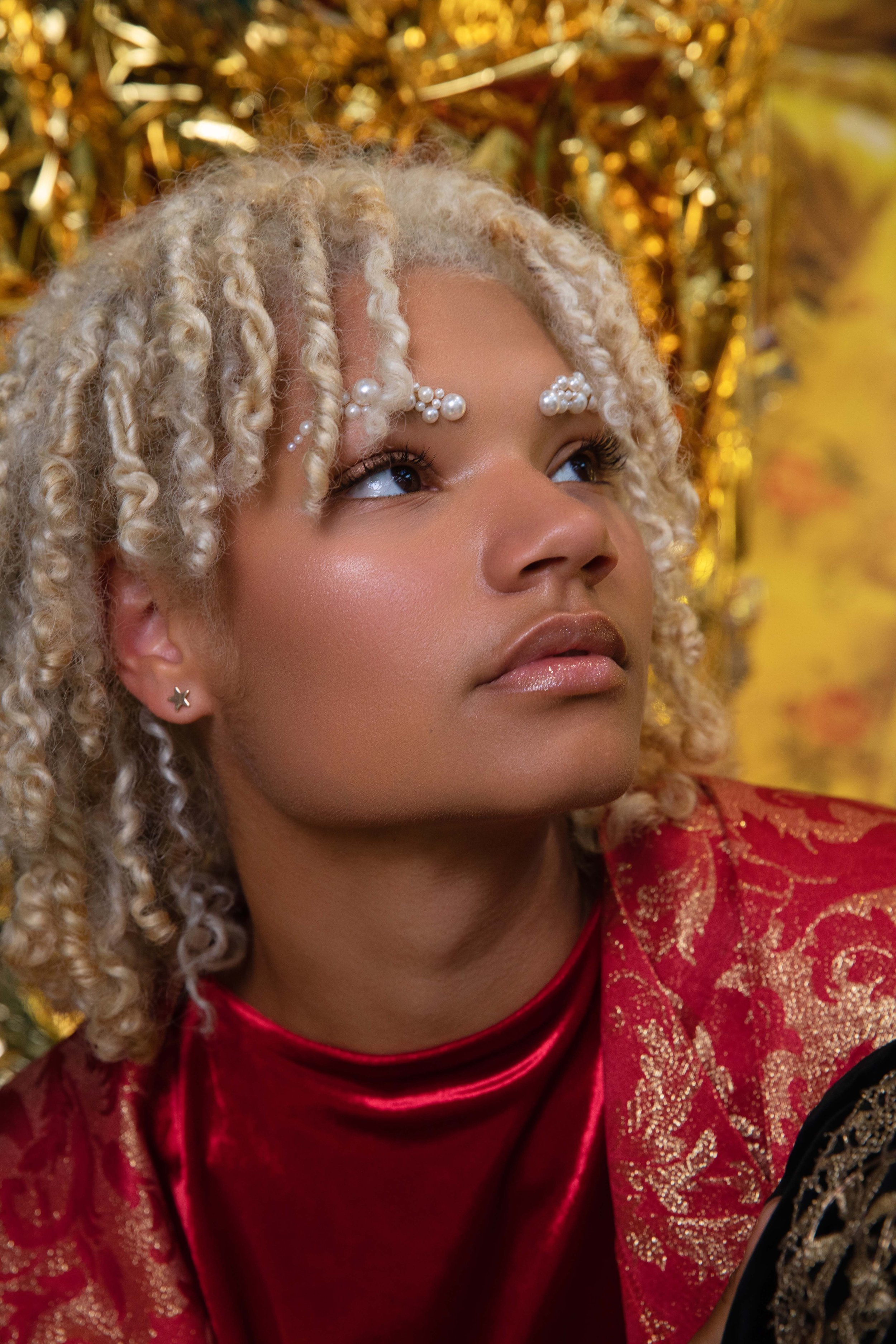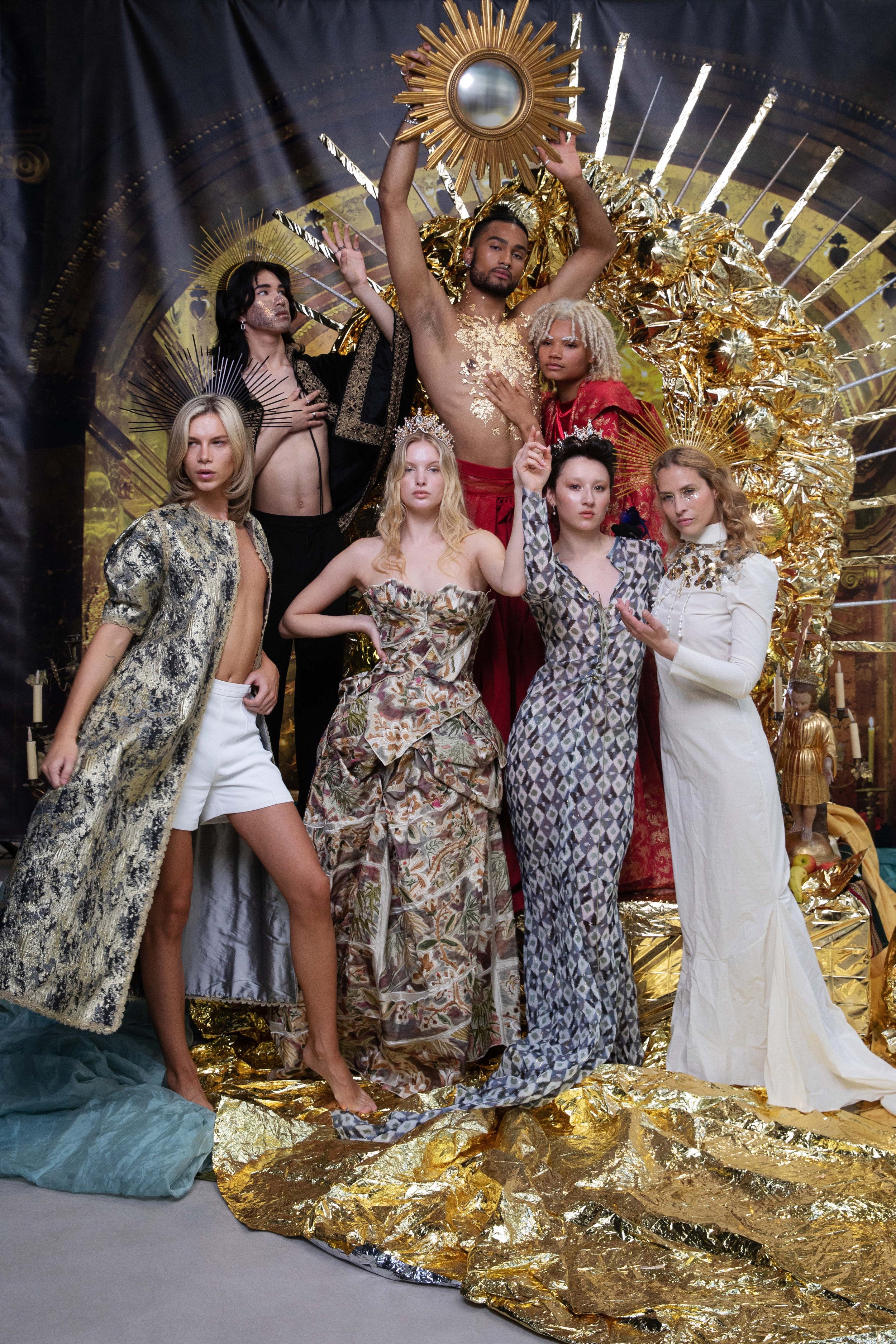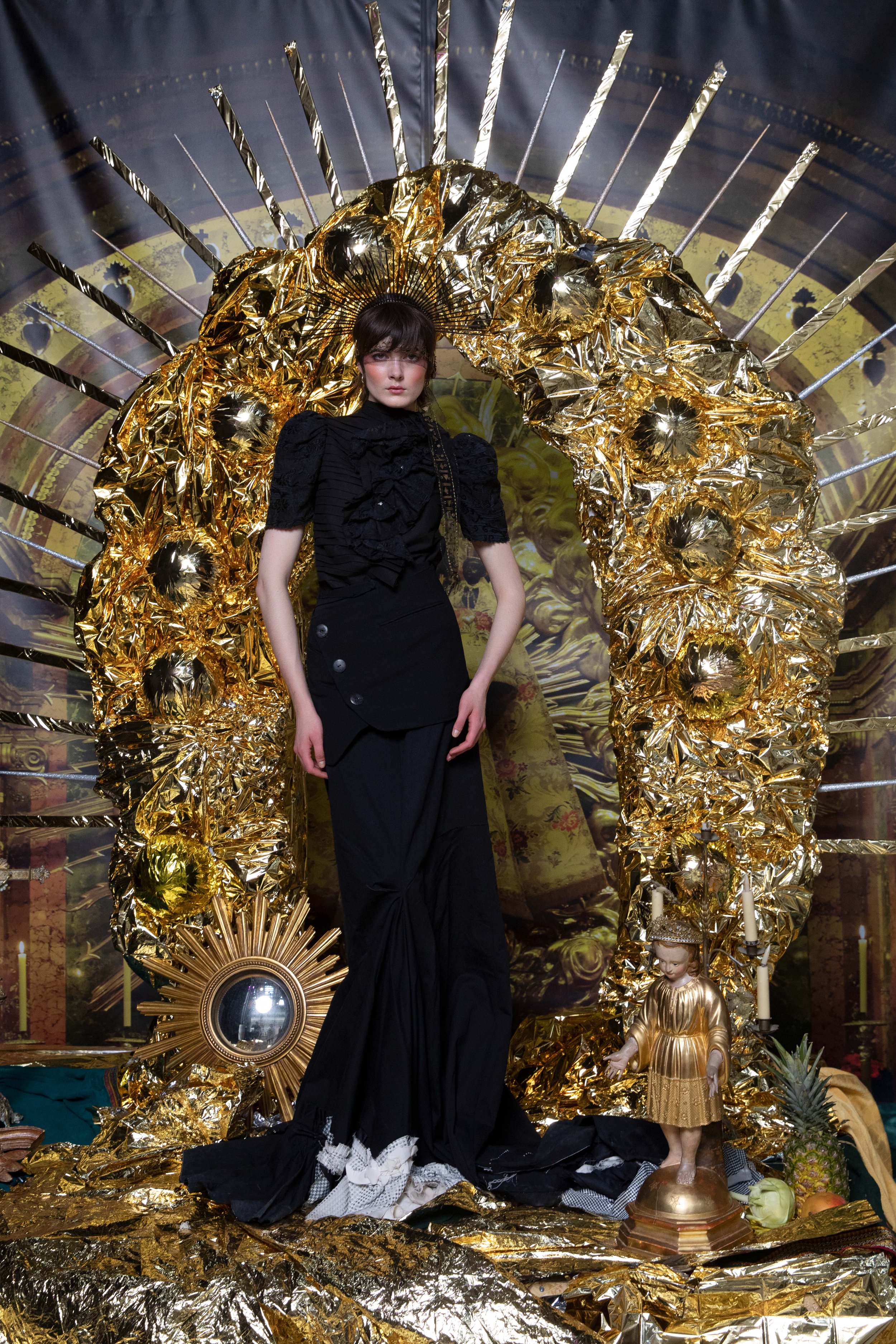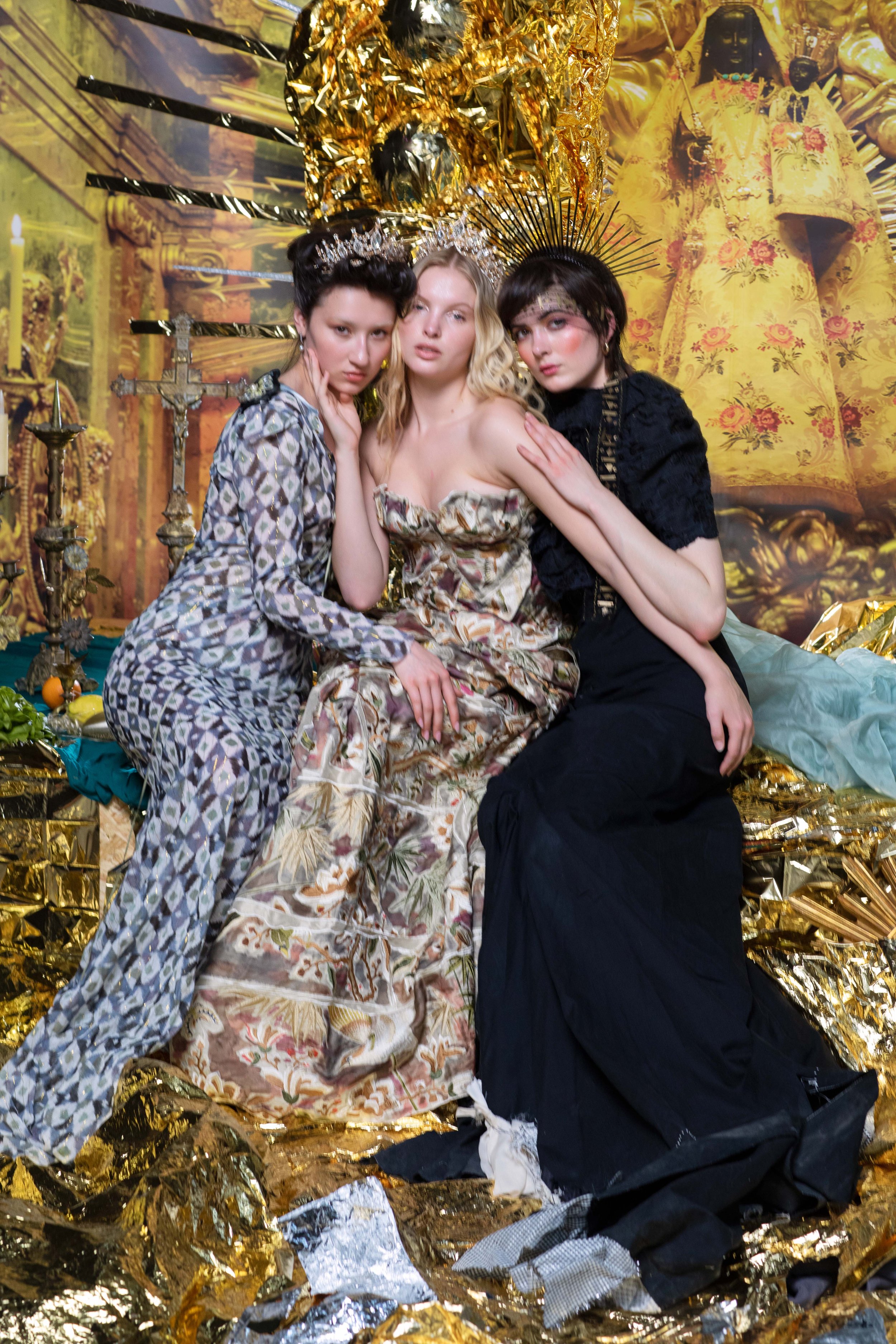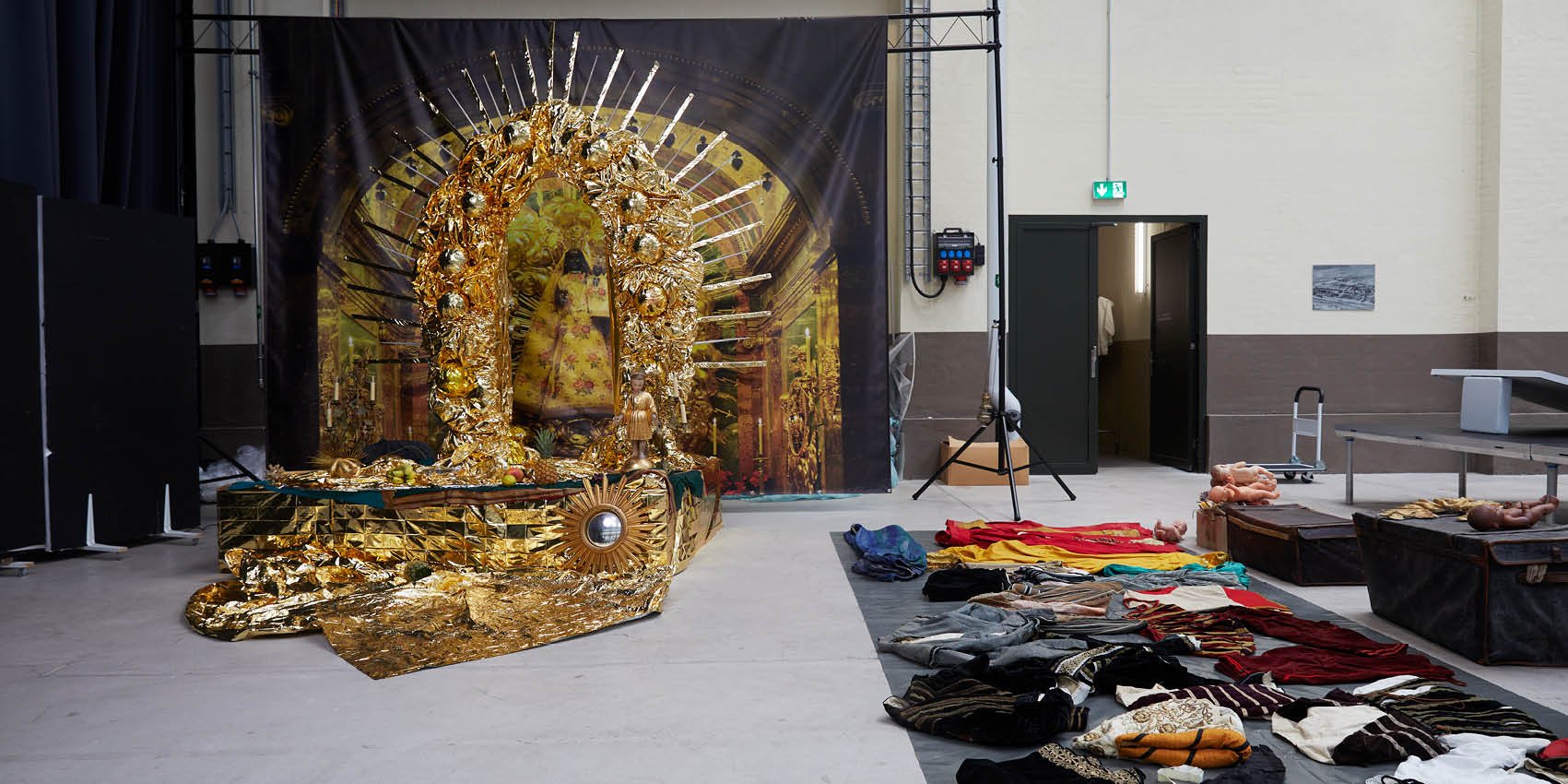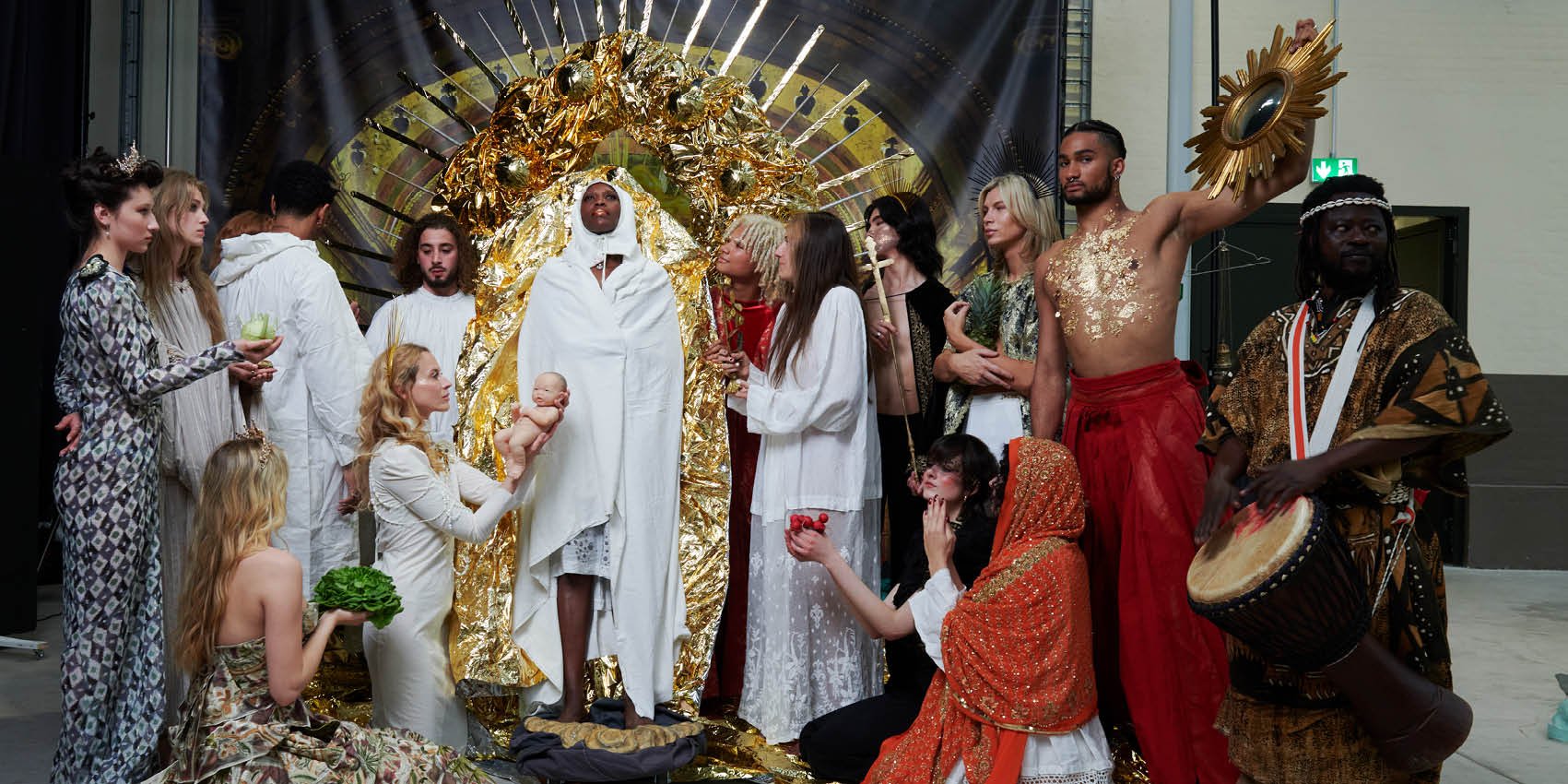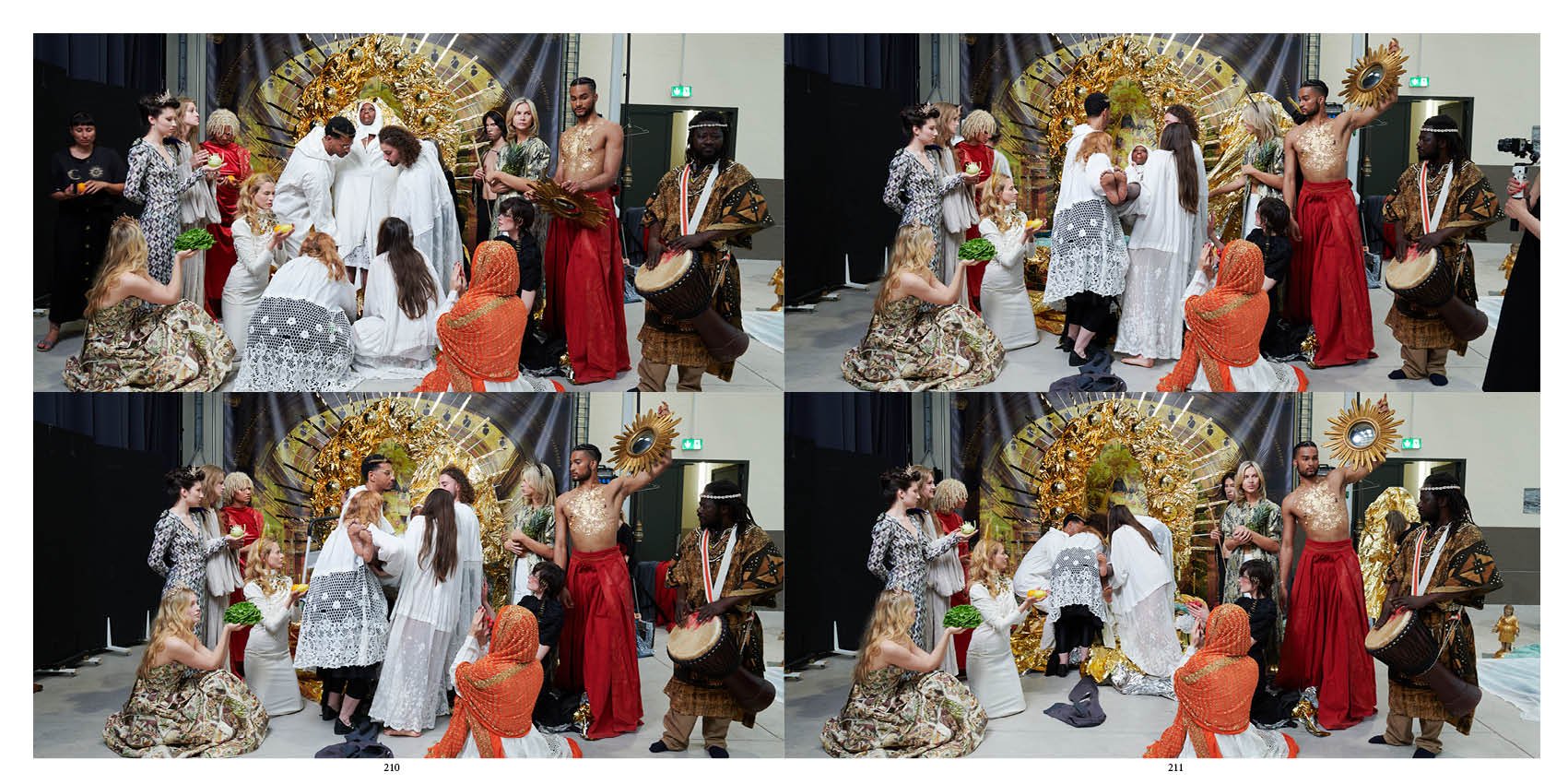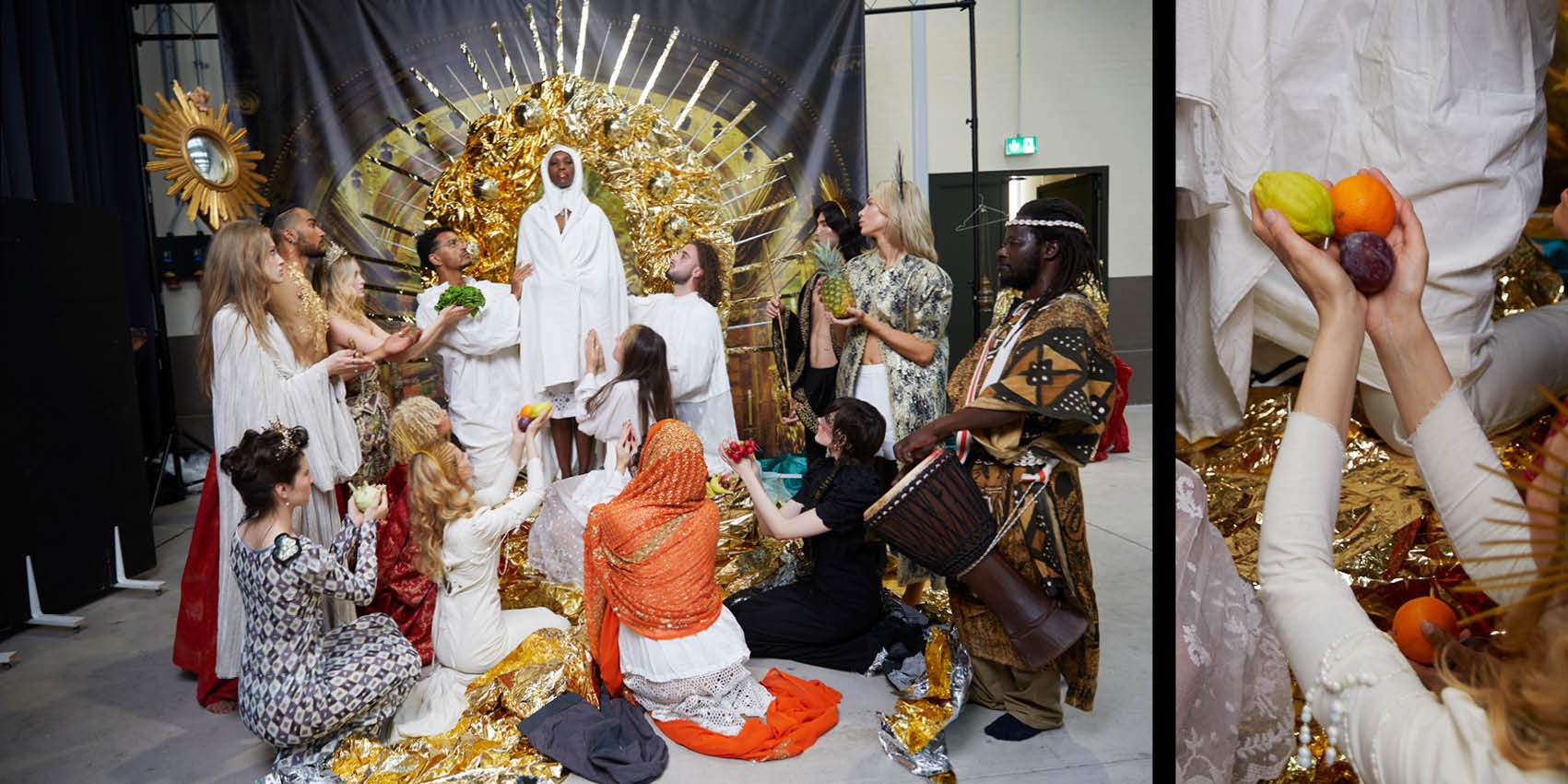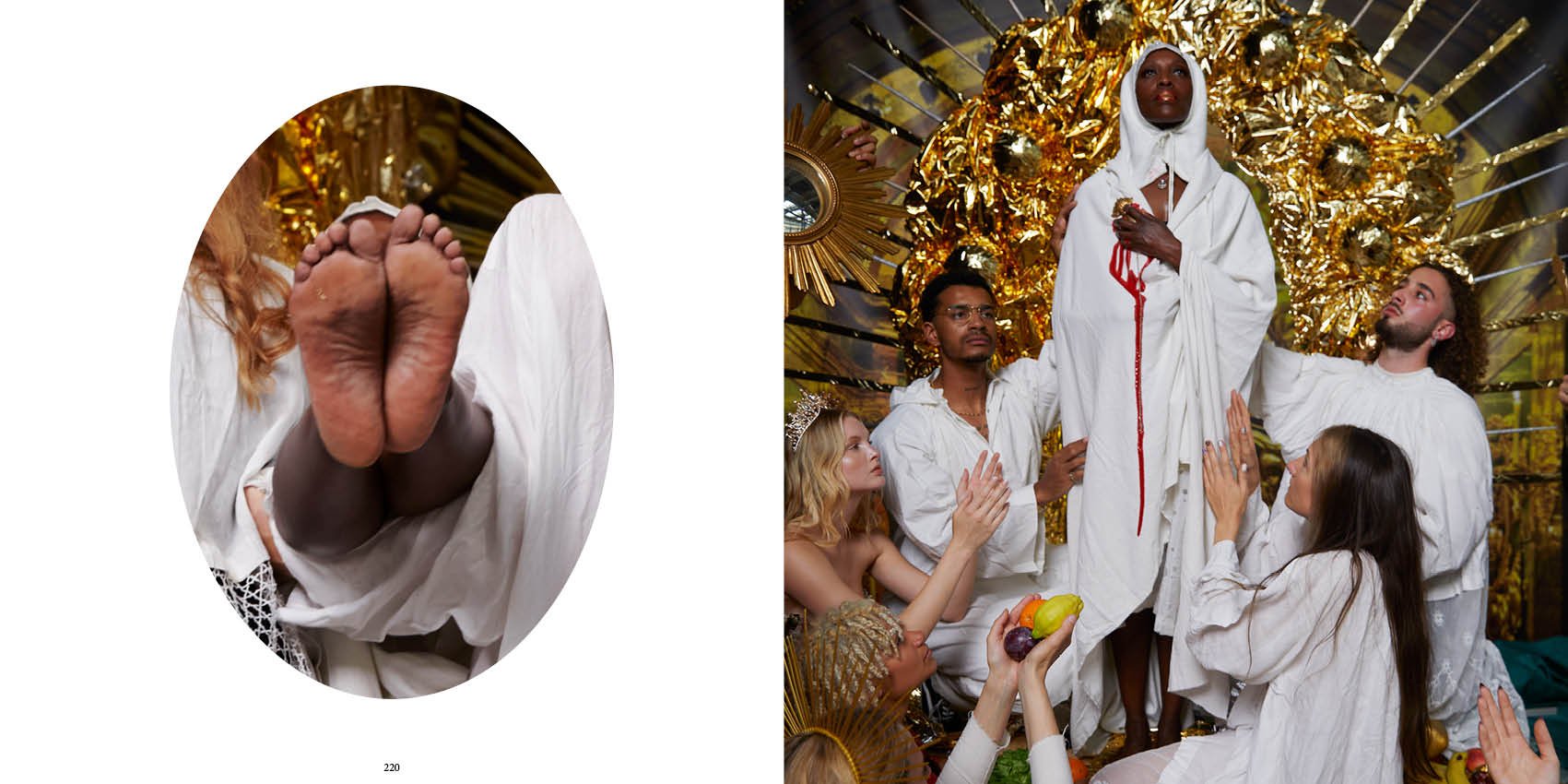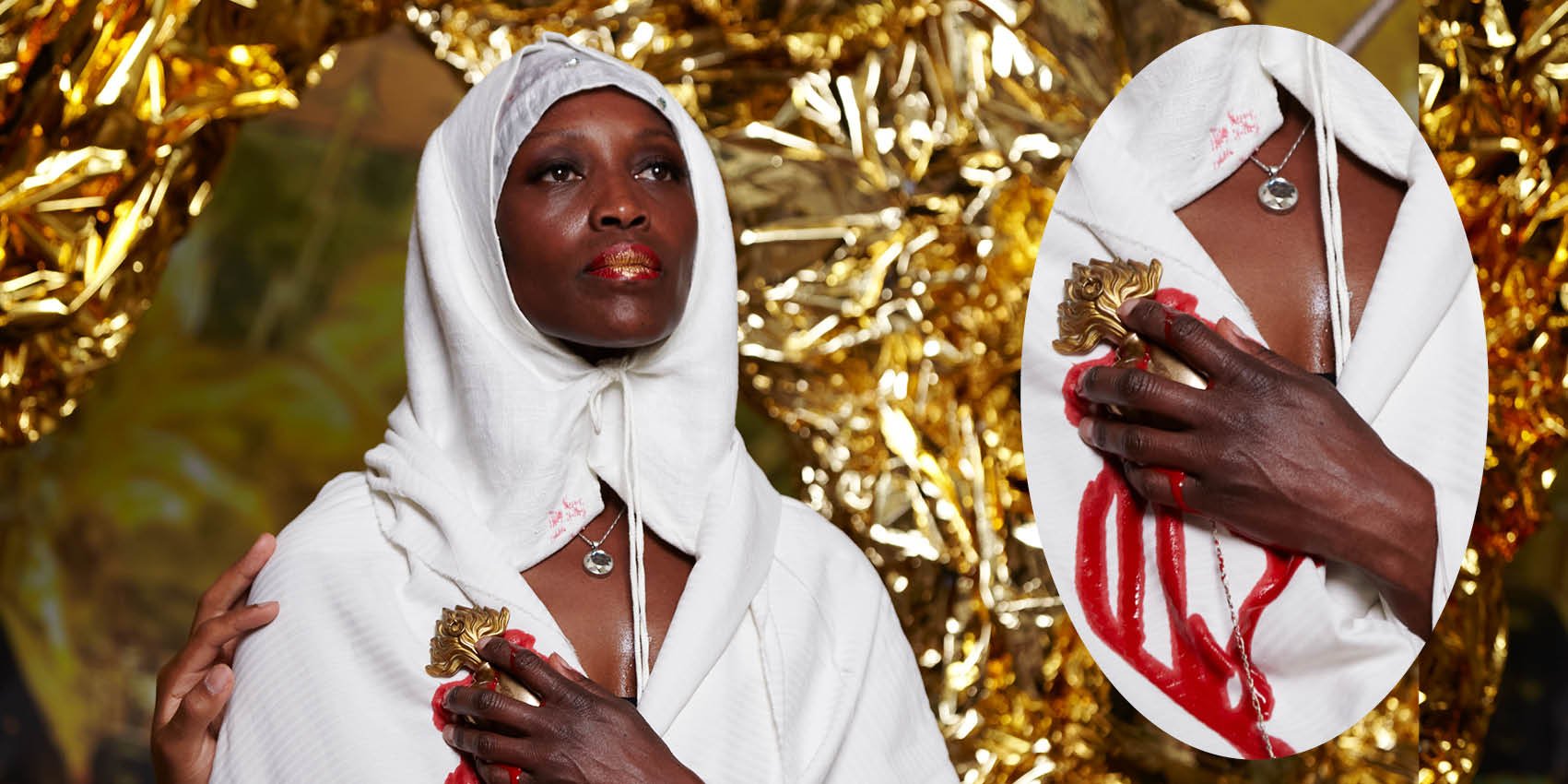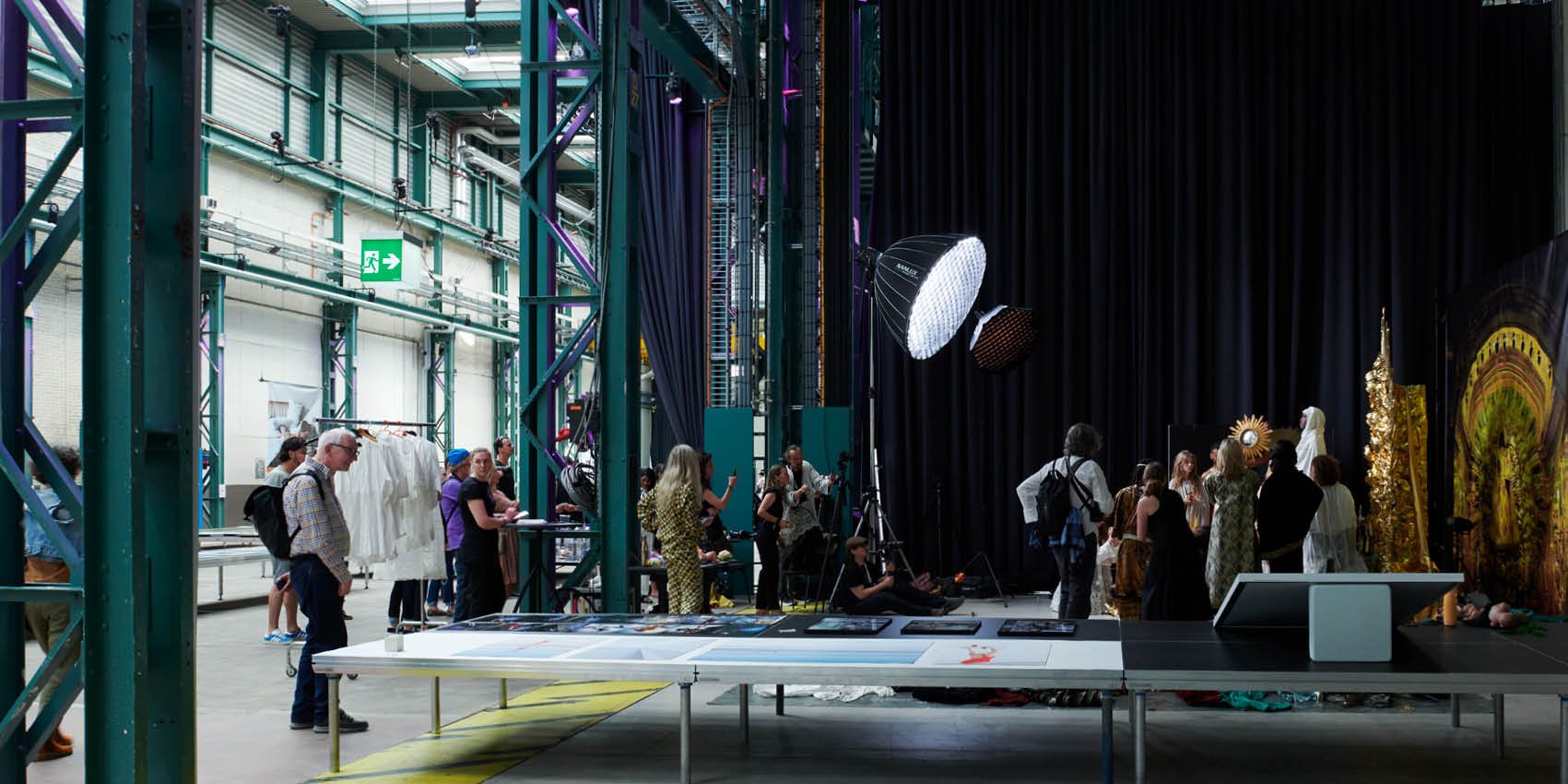As a feminist artist Iris Brosch is interested in the representation, perception and mutability of the image of women. By giving attention the Black Madonna she wants to highlight the dignity and strength of women in our times. For the annual exhibition “photo Schweiz” in Zurich Iris was intrigued by the idea to reconstruct the Black Madonna as a Tableau Vivant.
Tableau Vivants are a way of artistic expression which Iris has been using for many years. With this way of performance she transported the image of grace into the contemporary world. Having Marieta Kiptalam - the co-founder of Black Art Matters - as a center piece fully unfolded the spiritual potential of this Tableau Vivant. The diverse casting worshiping Marieta shows the fluidity and particularity in spiritual experiences. The performance turned into a platform to honour women as strong admirable figures and aims to add to the representation of women of colour.
The Madonna is not only a powerful symbol of femininity and maternity but also a ubiquitous influential female figure in the history of Christianity. Especially among secular feminists the historical and cultural influence of the Madonna has been overlooked. Iris Brosch wants to challenge this since she sees a lot of power behind the idea of the Madonna to shape perceptions of women and attitudes towards them.
The Black Madonna in Einsiedeln represents a paradox reality: She attracts millions of admirers, believers and pilgrims who face her in devotion. Iris would like to see this admiration and valorisation for all of womanhood. As women of colour are still vastly underrepresented in the political and cultural realm she sees the spiritual success of the Black Madonna as an impactful symbol associated with divine power and femininity.
The Black Madonna is embodied by the Zurich cultural activist and co-founder of Black Art Matters Marieta Kiptalam. She stands up for humanity and equality of all human beings, which are values shared and represented in Iris Brosch’s body of art. Marieta herself has a lot of knowledge about Einsiedeln, where the Black Madonna is situated. There is a strong spiritual energy radiating from her which turned the performance and Marieta as its key figure into a unique and incomparable experience. The devotion by the models and people surrounding the scene turned the performance into a momentum where the Black Madonna became alive. By revitalising the image of grace of the Black Madonna Marieta devoted her body to narrate from a past and present life.
Cultural Activist MARIETA KIPTALAM as the Black Madonna
THE BLACK MADONNA
In the history of both Catholic and Orthodox Christiany, the Virgin Mary has been, inter alia, depicted and thus described as BLACK MADONNA. Such statues and paintings portray Virgin Mary and Infant Jesus with dark skin.
Black Madonnas are found in churches and shrines all over the world, 400-500 in Europe alone. Amongst them is the Black Madonna in KLOSTER EINSIEDELN, a statue which joined the chapel in 1466. When troops from the French Revolution tore down the chapel in 1798, the statue was hidden and saved from destruction.
In 1803 the Black Madonna of Einsiedeln came back to the newly built chapel and has since attracted many pilgrims and visitors, but has equally been the reason for controversial debates: There have been explanations from comparative religious studies, feminist theology, analytical psychology, and traditional Christian theology, as to why her skin is of dark colour. This highlights the multidimensionality behind the phenomenon of Black Madonnas.
To purchase the BLACK MADONNA photo book contact us per e-mail on: info@irisbrosch.com




